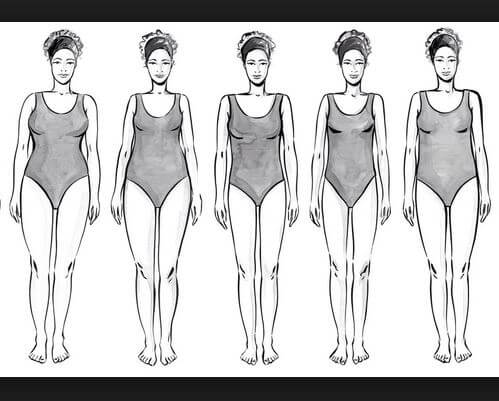The cellulite is believed to result when subcutaneous adipose tissue protrudes into the lower reticular dermis, thereby modifying significantly the dermo-epidermis junction and creating irregularities at the surface. The biomechanical properties of epidermal and dermal tissue may also influence severity. This phenomenon located principally in the tights, abdomen and buttocks is characterised giving a spongy aspect of the skin. It can be associated with water retention and fibrose.
The clinical studies of the treatment efficacy of slimming products evaluate quantitatively and qualitatively, at the surface or deeply, the body morphology, the skin topography, the state of the dermis and hypodermis, the microcirculation. The inclusion of the subjects with the hormonal criteria, is a key point of this type of evaluation to minimise the inter-individual variations.
What are the present methods and devices available to characterise the changes of weight loss and cellulite decrease ?
Body morphology
- Scores by experts: 2 scales for body images (Gardner and al.), Body shape Questionnaire (Rousseau and al.), Body-image assessment scale (Thompson and al.)
- Centimetric measurements: circumference by a tape measure or a laser
- 2D imaging using cameras or video and a special bench associated with data treatment.
- 3D imaging:
- Stereo vision system, camera or video for multidimensional qualitative and quantitative evaluation, associated with data modelling: AEVA 4D (Eotech), BodyScan 3D (Canfield)
- Fringe projection and data treatment.
Cellulite aspects
- Clinical visual and tactile scores by skin experts: Scores by experts of the orange peel appearance, skin rugosity and elasticity: several are available and the Cro’s are the best to give you advice.
- Global surface aspect of the skin: C-Cube, DermaTOP, Antera 3D, Videometer,
- Surface topography analysis by Silflo print, photo with oblique light, fringe projections,
- Hypodermis analysis measure of the thickness, shape and density
- Ultrasound (5-10 MHz): DUB®SkinScanner, Dermascan, Dermcup,
- MRI : quantitatively evaluation of the fatty noddles,
- Microscopy: Confocal, Vivascope (Mavig), MPT Flew, Vivosight (Michelson); Raman Spectroscopy: (RiverD); Reflectance Confocal Microscopy (Damae Medical); Optical Multiphoton Tomography LAB MPT Flex (Jenlab).
Biomechanical properties of the skin
Elasticity and the firmness of the dermis. A real-time deformation using ballistometry, suction, indentation or airflow. Then, measurement through optical or fringe projection principle: Dynaskin (Eotech, Orion), SkinFlex (Orion), Ballistometer (Dia-Stron), Cutometer and Cutiscan (C+K) , Elastimeter (Delfin), DermaLab Elasticity (Cortex),
Microcirculation: AB TiVi 700 and Tivi 8000 (Wheelsbridge); Laser Doppler,
Temperature: EvaTherm (eotech), Skin-Thermometer (C+K), DermaLab Temperature (CORTEX), Thermovision (Flirsystem)
For the slimming efficacy, the auto-evaluation with a use test questionnaire or a quality of life one, gives a very interesting information of the treatment performance perceived by the consumers. The multiparametric study is a great approach of this claim crossing results from consumer insights, scores by experts and metrology.
Easily retrieve the 22 methods and the 30 CRO’s which support your product claims
Skinobs database and free connection: skinobs.com
Skinobs News Blog: skinobs.com/news










 Follow us on Linkedin!
Follow us on Linkedin!
You must be logged in to post a comment.